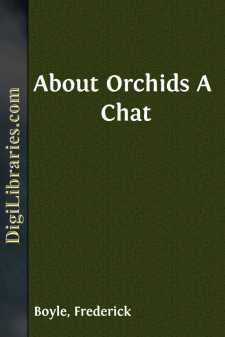Categories
- Antiques & Collectibles 13
- Architecture 36
- Art 48
- Bibles 22
- Biography & Autobiography 813
- Body, Mind & Spirit 142
- Business & Economics 28
- Children's Books 17
- Children's Fiction 14
- Computers 4
- Cooking 94
- Crafts & Hobbies 4
- Drama 346
- Education 46
- Family & Relationships 57
- Fiction 11829
- Games 19
- Gardening 17
- Health & Fitness 34
- History 1377
- House & Home 1
- Humor 147
- Juvenile Fiction 1873
- Juvenile Nonfiction 202
- Language Arts & Disciplines 88
- Law 16
- Literary Collections 686
- Literary Criticism 179
- Mathematics 13
- Medical 41
- Music 40
- Nature 179
- Non-Classifiable 1768
- Performing Arts 7
- Periodicals 1453
- Philosophy 64
- Photography 2
- Poetry 896
- Political Science 203
- Psychology 42
- Reference 154
- Religion 513
- Science 126
- Self-Help 84
- Social Science 81
- Sports & Recreation 34
- Study Aids 3
- Technology & Engineering 59
- Transportation 23
- Travel 463
- True Crime 29
The Woodlands Orchids
by: Frederick Boyle
Description:
Excerpt
HOW THE COLLECTION WAS FORMED
This question may be answered shortly; it was formed—at least the beginning of it—under compulsion. After fifteen years of very hard work, Mr. Measures broke down. The doctor prescribed a long rest, and insisted on it; but the patient was equally determined not to risk the career just opening, with an assurance of success, by taking a twelve-months’ holiday. Reluctantly the doctor sought an alternative. Yachting he proposed—hunting—shooting; at length, in despair, horse-racing! Zealously and conscientiously undertaken, that pursuit yields a good deal of employment for the mind. And one who follows it up and down the country must needs spend several hours a day in the open air. Such was the argument; we may suspect that the good man had a sporting turn and hoped to get valuable tips from a grateful client.
But nothing would suit. After days of cogitation, at his wits’ end, the doctor conceived an idea which might have occurred to some at the outset. ‘Take a house in the suburbs,’ he advised, ‘with a large garden. Cultivate some special variety of plant and make a study of it.’ This commended itself. As a boy Mr. Measures loved gardening. In the Lincolnshire hamlet where he was born, the vicar took pride in his roses and things, as is the wont of vicars who belong to the honest old school. It was an hereditary taste with the Measures’ kin. Forthwith a house, with seven acres of land about it, was purchased at Streatham—‘The Woodlands,’ destined to win renown in the annals of Orchidology.
But the special variety of plant had still to be selected. It was to be something with a flower, as Mr. Measures understood; hardy, and so interesting in some way, no matter what, that a busy man could find distraction in studying it. Such conditions are not difficult for one willing to spend hours over the microscope; but in that case, if the mind were relieved, the body would suffer. At the present day orchids would suggest themselves at once; but twenty or twenty-five years ago they were not so familiar to the public at large. One friend proposed roses, another carnations, a third chrysanthemums, and a fourth, fifth, and sixth proposed chrysanthemums, carnations, and roses. Though the house and the large garden had been provided, Mr. Measures did not see his way.
I am tempted to quote some remarks of my own, published in October 1892. ‘I sometimes think that orchids were designed at their inception to comfort the elect of human beings in this anxious age—the elect, I say, among whom the rich may or may not be included. Consider! To generate them must needs have been the latest “act of creation,” as the ancient formula goes—in the realm of plants and flowers at least. The world was old already when orchids took place therein; for they could not have lived in those ages which preceded the modern order. Doubtless this family sprang from some earlier and simpler organisation, like all else. But the Duke of Argyll’s famous argument against the “Origin of Man” applies here: that organisation could not have been an orchid....



